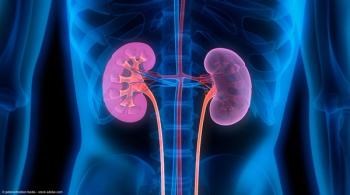
Intervention enhances periprocedural antibiotics adherence for in-office cystoscopy
A 4-step quality improvement intervention increased compliance with American Urological Association guidelines for periprocedural antibacterial prophylaxis for high-risk patients receiving cystoscopy.
A basic quality improvement protocol enhanced compliance with American Urological Association (AUA) guidelines for periprocedural antibacterial prophylaxis for high-risk patients receiving in-office cystoscopy, according to a study published in the Journal of Urology.
The AUA best practice guideline for periprocedural antibiotic prophylaxis recommends the treatment when there is a greater than 10% potential infection rate. Since in-office cystoscopic
procedures in high-risk cases are linked to a higher infection risk, antibacterial prophylaxis is indicated.
Researchers from the division of urology in the department of surgery at the Virginia Commonwealth University School of Medicine in Richmond, Virginia, devised and evaluated a 4-step intervention to optimize appropriate delivery of antibiotics in this setting. Overall, the appropriate administration of antibiotics in this setting was increased by 49.1% (P <.0001) through use of the intervention.
“This study demonstrates that implementation of a 4-step QI initiative was able to significantly improve the rate of appropriate antibiotic administration in our population of patients undergoing office based cystoscopy according to published AUA guidelines,” lead study author Natalie Swavely, MD, and coauthors wrote. “This protocol can easily be incorporated into any urology practice. The protocol also can easily be adapted to any changes in guideline recommendations based on emerging research.”
The 4-point intervention was composed of a “yes/no” checklist to identify patients who were high risk; the urology provider assessing the checklist and electronically place an antibiotics order; appropriate patients receiving single doses of the most commonly recommended antibiotics (ciprofloxacin, sulfamethoxazole/trimethoprim and gentamicin) through immediate nurse-directed administration; and, during the preprocedural time-out, a review of the checklist and antibiotic administration.
To assess the intervention, Swavely et al conducted a retrospective analysis to compare patients’ antibiotic adherence 3 months prior and 3 months after the intervention was implemented. Overall, the analysis included 307 patients, comprising 157 prior to implementation of the intervention and 150 after the protocol was put in place.
Among the 157 patients in the pre-intervention group, the median age was 58.27 years and 58.6% of patients were male. Patients were indicated for cystoscopy due to microscopic hematuria (15.9%), gross hematuria (12.1%), urinary retention (3.8%), lower urinary tract symptoms (12.7%), bladder cancer surveillance (17.8%), urinary incontinence (5.1%), neurogenic bladder (1.9%), stent removal (22.9%), upper tract cancer surveillance (3.2%), recurrent UTIs (1.9%), fistula (0.6%), urethral diverticulum (0.6%), and chyluria (1.3%).
The 150 patients in the post-intervention group had a median age of 58.11 years and 75.3% of patients were male. Patients were indicated for cystoscopy due to microscopic hematuria (12.7%), gross hematuria (22%), urinary retention (5.3%), lower urinary tract symptoms (20.7%), bladder cancer surveillance (22%), urinary incontinence (1.3%), neurogenic bladder (2%), stent removal (11.4%), upper tract cancer surveillance (1.3%), and recurrent UTIs (1.3%).
In the pre-intervention cohort, 76.4% (n = 120) of patients were classified as high risk and thus indicated for antibiotic prophylaxis; however, only 31.7% (n = 38) of these patients were actually administered the treatment. In the post-intervention arm, 69.3% (n = 104) of patients were indicated for antibiotic prophylaxis based on their high-risk status. Of these patients, 80.8% (n = 84) actually received the treatment.
“Our quality improvement (QI), initiative was straightforward and easy to implement with buy-in from providers and clinic nursing staff. In addition, the QI initiative added minimal time and no increase in cost to our high-volume urology clinic at a tertiary care academic teaching hospital,” Swavely et al wrote in their conclusion.
Reference
Swavely NR, Vince RA, Klausner AP, et al. Adherence to AUA guidelines for periprocedural antibiotics for in-office cystoscopy after implementation of a simple quality improvement protocol. J Urol. 2020;7(4):279-284. https://doi.org/10.1097/UPJ.0000000000000092
Newsletter
Stay current with the latest urology news and practice-changing insights — sign up now for the essential updates every urologist needs.


















